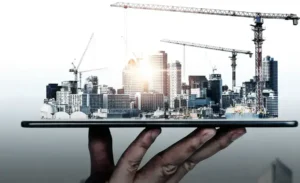Sustainable construction is a dynamic and forward-thinking approach that encompasses a broad spectrum of practices aimed at minimizing the environmental impact of building activities while promoting economic and social well-being. The emphasis is on creating buildings that use resources more efficiently, reduce waste, and provide a healthier environment for occupants.
Companies like NexGen Constructors are at the forefront of this movement, integrating innovative techniques and materials into their projects. The focus is not only on immediate efficiency but also on long-term sustainability, ensuring that the structures we build today don’t compromise the needs of future generations. Since the building sector is one of the largest contributors to global carbon emissions, switching from conventional processes to more sustainable ones is imperative.
Benefits of Sustainable Construction
- Significantly reduced carbon footprint, contributing to global climate change mitigation efforts.
- Enhanced energy and water efficiency, leading to substantial cost savings over the building’s lifecycle.
- Improved indoor air quality, promoting better health and productivity for occupants.
- Potential for long-term operational cost savings, making buildings more economically viable.
Based on a study by the World Green Building Council, sustainable buildings can achieve significant reductions in energy and water usage. Over time, these reductions translate into lower operational costs, offering a compelling economic argument for adopting sustainable practices. Additionally, sustainable construction can increase the marketability and value of properties as more buyers and tenants prioritize eco-friendly buildings.
Key Technologies Driving Innovation
Several cutting-edge technologies are driving the shift towards more sustainable construction practices. These technologies make it possible to design and build structures that are not only environmentally friendly but also economically sound and socially responsible.
- Building Information Modeling (BIM)
- Green building materials like cross-laminated timber (CLT)
- Renewable energy systems in the form of solar panels and wind turbines
- Smart building technologies that boost energy efficiency and occupant comfort
Building Information Modeling (BIM)
The building industry is undergoing a change thanks to BIM, which offers a thorough digital representation of the functional and physical aspects of a project. This technology allows for more efficient planning, design, and management of construction projects, reducing waste and improving coordination among stakeholders. By facilitating better decision-making, BIM contributes to more sustainable building practices.
Green Building Materials
Innovative materials like cross-laminated timber (CLT) are gaining popularity for their sustainability and versatility. CLT is made from layers of timber glued together in alternating directions, creating a strong and durable material. It is renewable, reduces the carbon footprint of construction projects, and offers excellent thermal and acoustic insulation properties.
Renewable Energy Systems
The amount of non-renewable energy that a building uses can be greatly decreased by including renewable energy technologies such as wind turbines and solar panels. These systems generate clean energy on-site, reducing carbon emissions and operational costs. Renewable energy systems become more and more cost-effective and efficient as technology develops, making them a more and more attractive choice for environmentally friendly buildings.
Smart Building Technologies
Smart technologies enhance energy efficiency by using automated systems to control lighting, heating, and cooling based on real-time data. These technologies can adjust energy usage to match occupancy patterns, reduce waste, and lower utility bills. Furthermore, interior air quality can be monitored and enhanced by smart building technologies, making the inhabitants’ environment healthier and more comfortable.

Challenges and Solutions
While the benefits of sustainable construction are evident, several challenges can hinder its widespread adoption. Recognizing these challenges and implementing practical solutions is essential for advancing sustainable practices in the construction industry.
- Greater initial costs associated with sustainable materials and technologies
- Lack of awareness and expertise in sustainable construction practices
- Regulatory hurdles and inconsistent standards across regions
Fortunately, there are solutions to these challenges. For instance, governments and organizations increasingly offer incentives and support for green building initiatives. Grants, tax breaks, and subsidies can assist cover the higher upfront costs, increasing the viability of sustainable initiatives from a financial standpoint. Additionally, certifications like Energy Star and LEED (Leadership in Energy and Environmental Design) provide standardized benchmarks for sustainable building practices, helping to streamline implementation and build trust among stakeholders.
Education and training programs are also crucial for addressing the lack of awareness and expertise. We can create awareness by reviewing some online articles to get knowledge. In my opinion, Top A Mag is the best choice for you to go a head. By providing knowledge and skills that enable the implementation of sustainable practices, the construction sector may surmount obstacles and expedite the adoption of environmentally friendly solutions.
Case Studies of Successful Projects
To understand the real-world impact of sustainable construction, it’s valuable to examine some exemplary projects that have successfully integrated sustainable practices. These case studies demonstrate the creative solutions and possible advantages of green building initiatives.
- The Bullitt Center in Seattle, considered the greenest commercial building in the world
- Bahrain World Trade Center, featuring integrated wind turbines
- One Central Park in Sydney, which boasts lush vertical gardens
Future Trends in Sustainable Construction
Future developments in sustainable construction are anticipated to be influenced by a number of factors as the building sector develops further. These trends reflect the growing demand for environmentally responsible building practices and the advancements in technology and materials that support them.
- More use of artificial intelligence and machine learning
- Expansion of circular economy principles
- Increased adoption of prefabricated and modular construction
